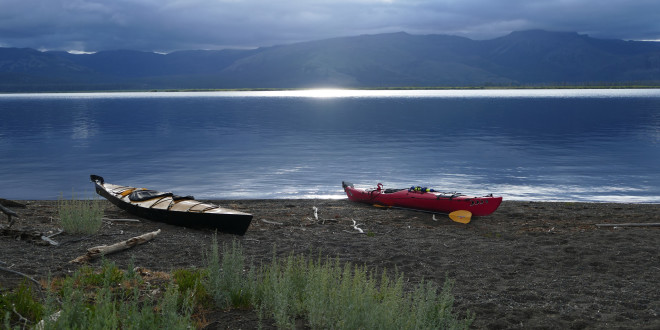Jonathan B. Jarvis, Director of the National Park Service, has released a letter staunchly opposing the proposed Yellowstone and Grand Teton Paddling Act.
Jarvis’ letter is another wrinkle in the ongoing debate surrounding an act brought forth by U.S. Representative Cynthia Lummis (R-WY). The Yellowstone and Grand Teton Paddling Act (or H.R. 974) would make both Parks create regulations for “hand-propelled” vessels on over 50 streams in both Parks. Said streams were previously closed around 1950 due to overfishing concerns; neither Park (it seems) was overtly interested in reopening the streams.
In essence, Lummis’ bill forces the nonissue and would compel the Parks to open the streams to rafting, kayaking, and other “hand-propelled” travel. And it’s not the first time Lummis has attempted to open Yellowstone and Grand Teton waterways to more paddling.
H.R. 974 passed the Committee on Natural Resources in early October but has not been brought up on the House floor yet. Jarvis’ letter is addressed to Chairman of the Committee on Natural Resources, Rob Bishop (R-UT).
In short, the NPS is “strongly opposed” to the Yellowstone and Grand Teton Paddling Act. From Jarvis’ letter:
The areas required to be opened to paddling by H.R. 974 represent some of the most intact, pristine landscapes in the contiguous United States and include rivers such as the Lamar, Yellowstone, and Gros Ventre. There may be no other scenic resource like this in the United States, and possibly the world, where visitors can experience large intact river systems and their environments in a wild, ecologically pristine state. These rivers are sensitive nesting and breeding grounds for wildlife, home of endemic and endangered species, spawning grounds for native cutthroat trout, and some of the last streams in the Greater Yellowstone Ecosystem for Arctic grayling. Opening these waterways will increase the risk of the transmission of aquatic invasive species like zebra and quagga mussels, Eurasian watermilfoil, whirling disease and others.
By mandating that the NPS allow paddling on these 50 waterways, the interests of a small group of recreational paddlers would be placed above those of all other Americans and above the protection of these fragile resources. The NPS has a statutory responsibility under the NPS Organic Act to ensure the protection in perpetuity of the fundamental values and resources for which Congress established these parks. By mandating that the NPS open these 50 waterways for the benefit of a very select few, Congress would undermine the ability of professional park managers and the public to determine how best to manage these special places.
Jarvis points out much of Yellowstone and Grand Teton are already open “hand-propelled paddling.” In Yellowstone, for instance, paddling is allowed on 163 of 168 lakes, with over 2,000 permits granted annually. In Grand Teton, an estimated 60,000 people float the Snake River each year, with more paddling across the Park. Opening the previously closed waterways would set “a very poor precedent” and potentially open the Parks to problems future superintendents and visitors will have to struggle with—against the NPS’ wishes.
As previously reported, Govtrack.us still gives the Yellowstone and Grand Teton Paddling Act a 21 percent chance of becoming law.
 Yellowstone Insider Your Complete Guide to America's First National Park
Yellowstone Insider Your Complete Guide to America's First National Park





